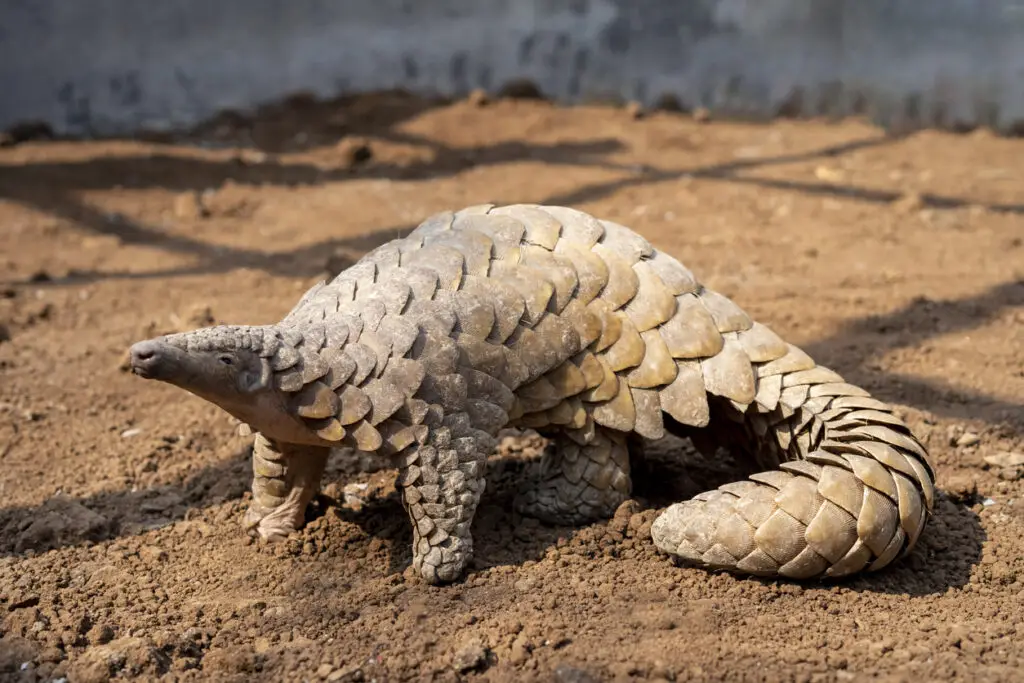1. Horseshoe Crab
Though it’s called a “crab,” the horseshoe crab is more closely related to spiders than to true crabs. With its armored exoskeleton and spiky tail, this arthropod has remained almost unchanged for around 450 million years.
2. Coelacanth
The coelacanth is often referred to as a “living fossil.” This deep-sea fish was thought to have been extinct for 66 million years until one was discovered off the coast of South Africa in 1938. With its lobed fins, it looks like something straight out of the Devonian period.
3. Gharial
The gharial, a type of crocodilian found in India and Nepal, looks like something that could have existed during the age of the dinosaurs. Its long, narrow snout and sharp teeth make it one of the most unique and ancient-looking reptiles alive today.
4. Tuatara
Native to New Zealand, the tuatara is often called a “living fossil” because it’s the last surviving member of the order Rhynchocephalia, which existed around 250 million years ago. Its spiny crest and primitive features make it seem like it walked out of a time machine.
5. Sturgeon
These giant, prehistoric-looking fish have been swimming in Earth’s waters for over 200 million years. Their rough, bony plates and long, torpedo-shaped bodies haven’t changed much since the Mesozoic Era.
6. Komodo Dragon
The largest lizard in the world, the Komodo dragon looks like it could have come from the time of the dinosaurs. With its rugged, scaled body and muscular legs, this apex predator in Indonesia has been roaming the Earth for millions of years.
7. Axolotl
This strange-looking amphibian, known for its feathery gills and wide, smile-like face, looks like something from a prehistoric swamp. Although it’s a modern-day species, it retains larval features throughout its life, giving it a distinctly ancient appearance.
8. Okapi
With the body of a horse and the striped legs of a zebra, the okapi is often referred to as a “living fossil” because its lineage dates back to the prehistoric era. Native to the rainforests of Central Africa, it has been largely unchanged for millions of years.
9. Pangolin

Covered in tough, overlapping scales, the pangolin looks like a small dinosaur armored with ancient plates. This nocturnal creature is one of the world’s most unique mammals and has a prehistoric charm that makes it seem like a relic from another era.
10. Platypus
The platypus is an incredibly odd creature, looking like something you might have seen in the age of dinosaurs. With its duck-bill, webbed feet, and the ability to lay eggs, this egg-laying mammal has features that seem straight out of a prehistoric period.
11. Nautilus
This marine mollusk, with its spiral-shaped shell, looks like it could have come from the deep ocean of a prehistoric world. Nautiluses have been living on Earth for around 500 million years, unchanged in their overall shape and structure.
12. Chilean Rose Tarantula
With its large, hairy legs and ominous presence, the Chilean rose tarantula looks like something that crawled out of the Carboniferous period. These spiders have been roaming the Earth for millions of years, surviving through countless evolutionary changes.
13. Jellyfish
Jellyfish are considered one of the oldest living animals, with fossils dating back over 500 million years. Their transparent, bell-shaped bodies and trailing tentacles make them look like ancient creatures drifting through time.
14. Numbat
The numbat, native to Australia, has a uniquely prehistoric look with its long, pointed snout, small stature, and striped back. It has a lineage dating back millions of years, making it one of the oldest marsupials still alive.
15. Salamander
Salamanders, particularly the giant ones found in China and Japan, have an ancient look with their long bodies, stubby legs, and moist, slimy skin. These amphibians have survived for around 170 million years, seemingly unchanged in their appearance.


